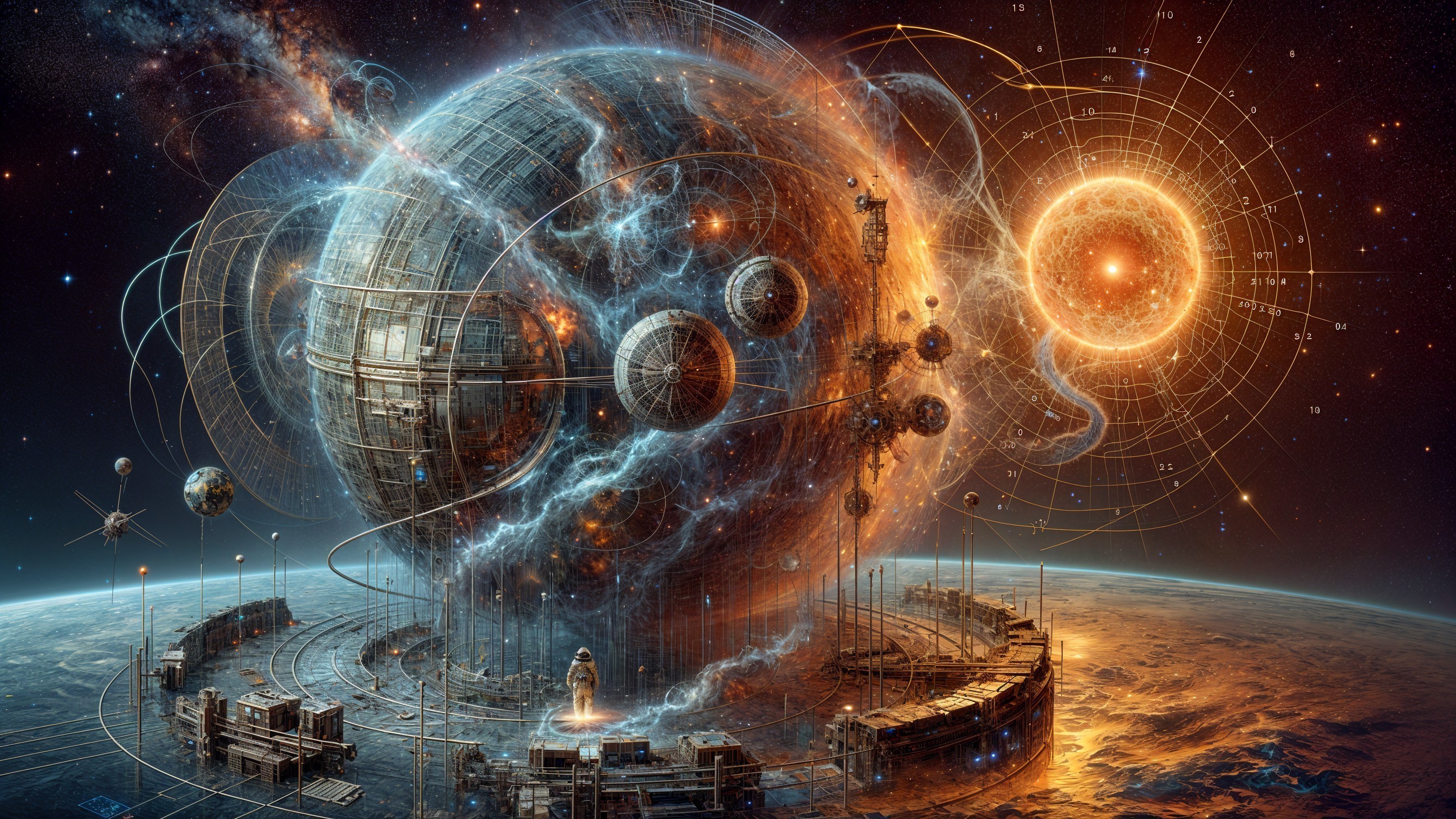Prompt:
An orbital observatory drifts at the edge of a dying star—a halo of glass and math over an ocean of fire.
Mirror petals the size of cities hang cracked and bowed, edges shredded by radiation. Plasma crawls along frames like luminous serpents whispering in particle tongues. Inside the observatory’s eye, a lone astronomer in a scorched EVA suit floats among instruments once precise, now devotional: gyros as prayer wheels, spectrometers ringing as they cool, a clock counting by half-lives.
They begin the last broadcast.
Holograms breathe around them—constellations long dead mapped as pale lattices. Names of extinct stars scroll in lament; each syllable a coordinate and farewell. The voice stays calm, a metronome against collapse, describing stellar convulsions, coronal folds, neutrino rain thickening like weather. Words travel through the station’s bones to the antenna crown, a comb of shattered spires that still sing.
Outside, the star closes. The corona heaves inward like an eye fighting sleep; prominences bend, tear, fall as red curtains of arithmetic. Magnetic lines snap, rewire, sketching cathedral geometry in a language of force. The observatory shudders—not from impact but rearranged rules. Time lengthens; notes sustain too long. Loose tools glow blue, remembering the early universe.
The astronomer continues, marking anomalies, tagging each defection of physics as timestamps drift apart. Radiation crawls through alloys; mirrors bloom with frost made of light. A pane fractures. Air crystals drift, slow, sparkling. The astronomer steadies on a rail etched by micrometeors—each scratch a tally of years the world forgot.
Cameras turn to the star. Lenses iris down. Image becomes structure: knots, braids, brightness wound around absence. The horizon flowers—not black but subtraction, devouring glare. Beyond, the universe distorts into a bowl where galaxies pour toward a hidden drain.
The broadcast shifts. The astronomer speaks first principles: hydrogen, gravity, patience. They narrate the star’s will—how it grew, fed, reached for balance, found appetite. They confess errors—maps as beliefs, instruments flattering makers. Then language strips to bone: wavelengths, periods, ratios—the hard nouns that do not break.
A flare hammers the hull. Plasma arcs write equations across mirrors, brief and bright. The station rings like a bell struck by a god. The suit chars in a lichen pattern like continents on a world no one will walk. They reach the transmitter core, open shielding, seat the final crystal—reserved for endings.
Countdown begins. The star folds again. A filament rises, snaps, the observatory sliding closer to never. The astronomer stabilizes the beam, corrects for time’s slow wind, keeps speaking. The voice does not tremble. The tremble belongs to matter.
The last paragraph is calibration tone. When light nears the limit of speech, signal converts: speech to noise, noise to ladder, transmission to measure for any mind that may find its echo. The star’s edge brightens until color leaves, and for a heartbeat longer than a heartbeat the observatory, astronomer, and mathematics share one shape.
Then the light closes its eye, and the broadcast goes on without them.
--mod ambient haze, --mod rim light, --mod dynamic composition, --mod highlight scatter, --mod specular control

 Artist
Artist